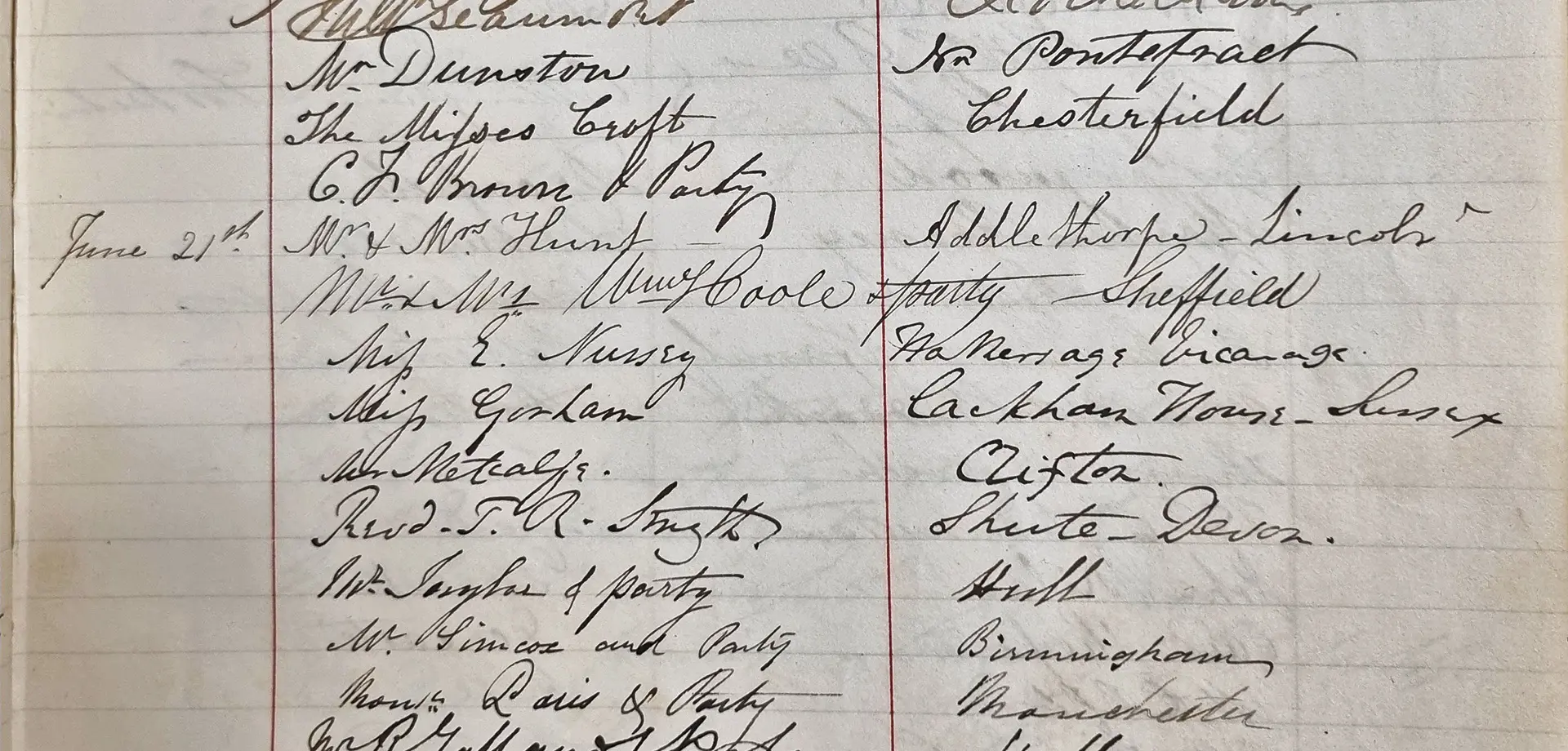Collections and Archives Assistant Ian Gregory reports on a 19th-century visitor to Chatsworth.
One of my earlier blog posts focused on Henry Nussey, whose sister Ellen was a close friend of Charlotte Brontë. On 21 June 1845, Ellen herself signed the visitors’ book at Chatsworth. At that time, Charlotte had not yet gained fame, so Ellen would have been seen as just another visitor.
Born in 1817 to a Yorkshire cloth merchant, Ellen Nussey attended Roe Head School, where she met Charlotte Brontë. Over the next twenty-four years, the two friends exchanged hundreds of letters, many of which would later become a crucial source for Elizabeth Gaskell’s Life of Charlotte Brontë.
Ellen also developed friendships with Anne and Emily Brontë. In 1849, she accompanied Anne and Charlotte on a trip to Scarborough in the hope that the sea air might aid Anne’s failing health. Sadly, Anne passed away there at the age of twenty-nine, likely from tuberculosis. While Jane Eyre was already a bestseller, Anne and Emily’s novels had yet to receive the recognition they would later earn. Anne’s The Tenant of Wildfell Hall, with its portrayal of a woman leaving her husband, was considered particularly scandalous at the time. Ellen provided great comfort to Charlotte during this difficult period, as Charlotte worked on her novel Shirley. Ellen believed that one of its characters, Caroline Helstone, was based on her.
In 1854, Charlotte married her father’s curate, Arthur Bell Nicholls, which led to a cooling of the friendship. Ellen and Arthur did not get along, and Ellen felt sidelined by his presence in Charlotte’s life. Some have even speculated that Ellen may have harbored romantic feelings for her dear friend.
After Charlotte’s death in 1855, Ellen dedicated the rest of her life to preserving her friend’s memory. She became a key contact for Brontë enthusiasts and biographers, ensuring that Charlotte’s legacy endured. Ellen passed away in 1897, and her possessions, including many of Charlotte’s letters, were dispersed at auction. Today, many of those letters are housed at the Brontë Parsonage Museum in Haworth. The parsonage, with its unassuming exterior, belies the extraordinary literary creativity that once flourished within its walls.






